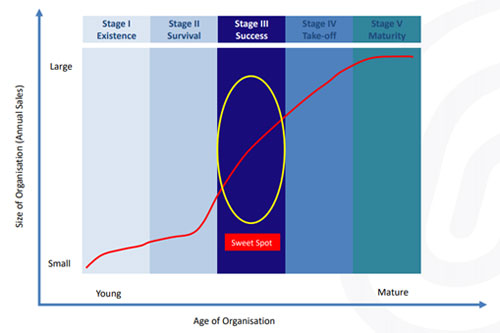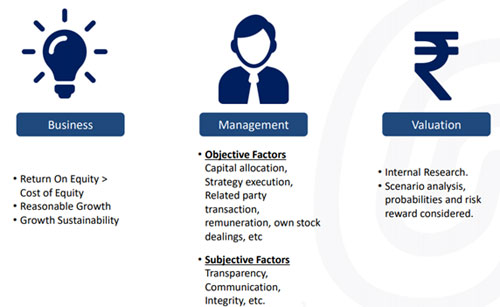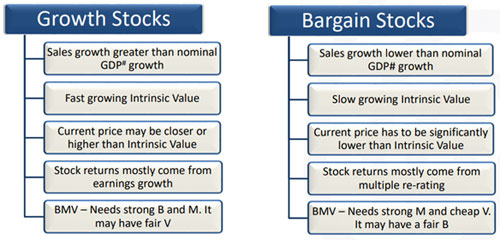Why This New Mid Cap Fund May Not Be The Best Bet For Investors?
Listen to Why This New Mid Cap Fund May Not Be The Best Bet For Investors?
00:00
00:00
I wanted to liquidate some of the schemes from my investment portfolio to gather funds for my upcoming trip to Japan. To choose from the existing best performing mid cap funds I hold has been difficult as the portfolio has been in the red, due to spread of Coronavirus.
I read an article that mentioned how Coronavirus has disrupted the trade globally, which has tanked the equity markets as most of the electronic goods and components are sourced from China.
Equity markets have been volatile due to a host of domestic and international macro and microeconomic factors. Despite the value buying opportunities, much of the pressure was seen in the small-cap index and mid-cap index.
The global concern of the virus is further going to impact the market movement and put more strain on the small cap and mid cap space. And during this time one news article reported a launch of Union Midcap Fund, does launching of a new fund makes sense now?
 (Image by Gerd Altmann from pixabay.com)
(Image by Gerd Altmann from pixabay.com)
Intrigued, I delved deeper to know more about Union Midcap Fund. It is an open-ended equity scheme that will invest predominantly in stocks of companies that fall within range of 101st - 250th company in terms of full market capitalization.
Union Mutual Fund is of the view that Midcaps have the potential to generate wealth. Midcaps are basically sweet spots; they are leaders in small sectors that will grow to be a future large cap. Hence despite the short-term volatility, they are better multipliers in the long term.
Image 1: Mid cap stock's position
 (Source: Union Midcap Fund Presentation)
(Source: Union Midcap Fund Presentation)
If you are aware as per SEBI's categorisation norms, an equity-oriented scheme is characterized as a midcap fund only if it invests a minimum of 65% of its total corpus in equity & equity related instruments of midcap stocks (i.e. companies from 101st to 250th on full market capitalisation basis).
Being an equity scheme this fund does carry extreme risk. On the risk-return spectrum, it is placed below Small-Cap and Thematic funds.
[Read: How to evaluate your risk appetite and risk tolerance level?]
If you have the stomach for moderately high-risk appetite and investment time horizon of at least 5 years, then you may skew your equity portfolio to a midcap fund.
Table 1: Details of Union Midcap Fund
| Type |
An open ended equity scheme predominantly investing in mid cap stocks. |
Category |
Mid Cap Fund |
| Investment Objective |
To achieve long term capital appreciation and generate income by investing predominantly in equity and equity related securities of mid cap companies.
However, there is no assurance that the Investment Objective of the Scheme will be achieved. |
| Min. Investment |
Rs 5,000 and in multiples of Re 1 thereafter |
Face Value |
Rs 10 per unit |
| Plans |
|
Options |
-
Growth*
- Dividend (Pay-out, Reinvestment and Sweep)
*Default option |
| Entry Load |
Nil |
Exit Load |
-
1% if units are redeemed or switched out on or before completion of 1 year from the date of allotment of units.
-
Nil if units are redeemed or switched out after completion of 1 year from the date of allotment of units
|
| Fund Manager |
Mr Vinay Paharia and Mr Hardick Bora |
Benchmark Index |
NIFTY Midcap 100 Index$(TRI) |
| Issue Opens |
March 02, 2020 |
Issue Closes: |
March 16, 2020 |
$Disclaimer: The Product(s) are not sponsored, endorsed, sold or promoted by NSE INDICES LIMITED (formerly known as India Index Services & Products Limited ("IISL")). NSE INDICES LIMITED does not make any representation or warranty, express or implied, to the owners of the Product(s) or any member of the public regarding the advisability of investing in securities generally or in the Product(s) particularly or the ability of the NIFTY Midcap 100 Index to track general stock market performance in India. The relationship of NSE INDICES LIMITED to the Issuer is only in respect of the licensing of the Indices and certain trademarks and trade names associated with such Indices which is determined, composed and calculated by NSE INDICES LIMITED without regard to the Issuer or the Product(s). NSE INDICES LIMITED does not have any obligation to take the needs of the Issuer or the owners of the Product(s) into consideration in determining, composing or calculating the NIFTY Midcap 100 Index. NSE INDICES LIMITED is not responsible for or has participated in the determination of the timing of, prices at, or quantities of the Product(s) to be issued or in the determination or calculation of the equation by which the Product(s) is to be converted into cash. NSE INDICES LIMITED has no obligation or liability in connection with the administration, marketing or trading of the Product(s). NSE INDICES LIMITED do not guarantee the accuracy and/or the completeness of the NIFTY Midcap 100 Index or any data included therein and NSE INDICES LIMITED shall have not have any responsibility or liability for any errors, omissions, or interruptions therein. NSE INDICES LIMITED does not make any warranty, express or implied, as to results to be obtained by the Issuer, owners of the product(s), or any other person or entity from the use of the NIFTY Midcap 100 Index or any data included therein. NSE INDICES LIMITED makes no express or implied warranties, and expressly disclaim all warranties of merchantability or fitness for a particular purpose or use with respect to the index or any data included therein. Without limiting any of the foregoing, NSE INDICES LIMITED expressly disclaim any and all liability for any claims ,damages or losses arising out of or related to the Products, including any and all direct, special, punitive, indirect, or consequential damages (including lost profits), even if notified of the possibility of such damages
(Source: Scheme Information Document)
How will the scheme allocate its assets?
Under normal circumstances, the asset allocation will be as follows:
Table 2: UMF 's Asset Allocation
| Instruments |
Indicative Allocations (% of net assets) |
Risk Profile |
| Minimum |
Maximum |
| Equity and Equity related instruments of Mid Cap companies# |
65 |
100 |
High |
| Equity and Equity related instruments of companies other than Mid Cap companies# |
0 |
35 |
High |
| Debt and Money Market Instruments |
0 |
35 |
Low to Medium |
| Units issued by REITs and InvITs |
0 |
10 |
Medium to High |
# In accordance with SEBI Circular No. SEBI/HO/IMD/DF3/CIR/P/2017/114 dated October 6, 2017, as amended from time to time, Large Cap, Mid Cap and Small Cap are defined as follows:
Large Cap: 1 st -100th company in terms of full market capitalization
Mid Cap: 101st - 250th company in terms of full market capitalization
Small Cap: 251st company onwards in terms of full market capitalization.
Investment in Securitized Debt - Nil. The Scheme does not intend to invest in debt securities having structured obligations (SO rating) and/or credit enhancements (CE rating).
Investments in Derivatives - upto 50% of the net assets of the scheme.
Investments in Securities Lending - upto 20% of its net assets of the Scheme (where not more than 5% of the net assets of the Scheme will be deployed in securities lending to any single counterparty).
(Source: Scheme Information Document)
What will the Investment Strategy be?
The Union Mutual Fund seeks to achieve long term capital appreciation and generate income by investing predominantly in equity and equity related securities of mid cap companies. To achieve the stated investment objective, the scheme will make investments as per the asset allocation pattern of the Scheme.
The scheme will invest minimum 65% of the total assets in equity and equity related securities of midcap companies, which in the opinion of the fund manager offers superior risk reward payoff. To manage the assets of the scheme, the fund manager and his investment team will follow an active strategy and will predominantly follow a bottom up approach of stock selection.
[Read: Two Approaches To Portfolio Construction Followed By Fund Managers]
The investment team shall scan the market for opportunities and shall evaluate the individual opportunities on their merits, leading to the bottom-up investment decision. Other aspects like asset allocation and sector allocation shall also be considered.
Further, the fund manager has the discretion to invest in equity and equity related instruments of companies other than mid cap companies (i.e. companies which have a market capitalisation of above or below the market capitalisation range of midcap companies), in line with the asset allocation pattern of the Scheme.
The fund manager could use derivatives within the permissible limits for hedging and rebalancing the portfolio or such other purpose as may be permitted under the Regulations from time to time. Investment in Debt and Money Market Instruments will be as per asset allocation pattern mentioned in this document, subject to the investment limits prescribed under the SEBI (Mutual Funds) Regulations, 1996 and circulars issued thereunder.
Who will manage the Union Midcap Fund?
Union Midcap fund will be co-managed by Mr Vinay Paharia and Mr Hardick Bora
Mr Vinay Paharia is a commerce graduate and has done masters in management studies (MMS). He is currently the Chief Investment Officer at the AMC and has over 17 years of work experience in Equity Research and Fund Management.
Before joining Union Mutual Fund, Mr Vinay Paharia was working with Invesco Asset Management (India) Private Ltd. as the Equity Fund Manager for more than a year. Prior to it, he was associated with DBS Cholamandalam AMC, K R Choksey Shares and Securities Pvt Ltd and First Global Stockbroking Pvt Ltd as Equity Research Analyst.
Some of the schemes, that Mr Vinay Paharia manages at the fund house are; Union Multi-Cap Fund (Formerly Union Equity Fund), Union Value Discovery Fund, Union Focused Fund, Union Long Term Equity Fund (Formerly Union Tax saver scheme), Union Small Cap Fund, Union Equity Savings Fund, Union Balanced Advantage Fund, Union Largecap Fund, Union Large & Midcap Fund, Union Capital Protection Oriented Fund - Series 7 and Union Capital Protection Oriented Fund - Series 8.
Mr Hardick Bora has done his Bachelors in Banking and Insurance from University of Mumbai and is a CFA - charterholder with the CFA Institute, USA. He is currently a Co-fund Manager at the AMC and has over 11 years of experience in the financial services sector.
Before joining Union Asset Management Company Private Limited as Research Analyst, Mr Hardick Bora he has worked with Motilal Oswal Securities Ltd. as Sr. Manager of Institutional Research (Pharmaceutical), Dolat Capital Markets Pvt. Ltd. as Research Associate (Pharmaceutical & Agrochemicals), Khandwala Securities Ltd. as Research Associate (Pharmaceutical), Yen Management Consultants Pvt. Ltd. and 3 Global Services Pvt. Ltd. as Customer Care Advisor.
Some of the schemes, that Mr Hardick Bora co-fund manages at the fund house include Union Small Cap Fund, Union Equity Savings Fund, Union Balanced Advantage Fund, Union Largecap Fund, and Union Large & Midcap Fund.
Table 3: Performance table of the schemes managed by the fund managers
(Source: ACE MF, PersonalFN Research)
(Data as of March 4, 2020)
As can be seen from the performance table, most of the schemes co-managed by the fund managers are being managed since March 2018, they have performed better. But the time frame is still less to assess the management style.
The outlook for Union Midcap Fund
In order to achieve the investment objective, the fund manager of the Union Midcap Fund will invest predominantly in stocks of companies that are a part of the mid-cap segment of the market capital, using a combination of bottom-up and top-down approach through active management.
And to select stocks from the universe (current fund house universe of about 156 stocks) of more than a defined threshold, a two-step process will be followed. The first step includes a BMV (Business, Management and Valuation) filtering process to select stocks of companies that have reasonable and sustainable growth.
Image 2: BMV filter
 (Source: Union Midcap Fund Presentation)
(Source: Union Midcap Fund Presentation)
The second step includes stock segmentation process, wherein they are segregated into growth stocks and bargain stocks. It is followed by a focused approach to create a portfolio with an objective to have a high potential return portfolio that will invest in mid-cap stocks and allocate assets accordingly.
[Read: Growth v/s Value Investing: Which Is Better Of The Two In Current Times?]
Image 3: Stock Selection and Segmentation
 (Source: Union Midcap Fund Presentation)
(Source: Union Midcap Fund Presentation)
So, the performance of the Union Midcap Fund relies on the construction of the portfolio. How the fund manager will construct the portfolio, amidst the current pandemic situtaion, as constructing the portfolio would not be easy and may inflict high-risk.
Although the market correction does provide an opportunity to do some value-buying, valuations seem stretched. The trailing 12-month P/E of the S&P BSE Sensex is hovering around at 23.28x and the S&P BSE 150 MidCap Index, is now at 29.05x.
[Read: Best Midcap Funds to Invest in 2020. Find them here...]
Hence, the fortune of the Union Midcap Fund will be closely linked to how the fund manager plays out the investment strategy in the endeavour to accomplish the stated investment objective.
[Read: Best Mutual Funds for SIP in 2020]
Warm Regards,
Aditi Murkute
Senior Writer
PS: Most of the equity funds have failed to beat the markets in the last two years. Our Head of Research, Vivek Chaurasia believes it is the right time to get your hands on high alpha generating funds before the markets bounce back. Click here to know more about 'The Alpha Booster Strategy'.